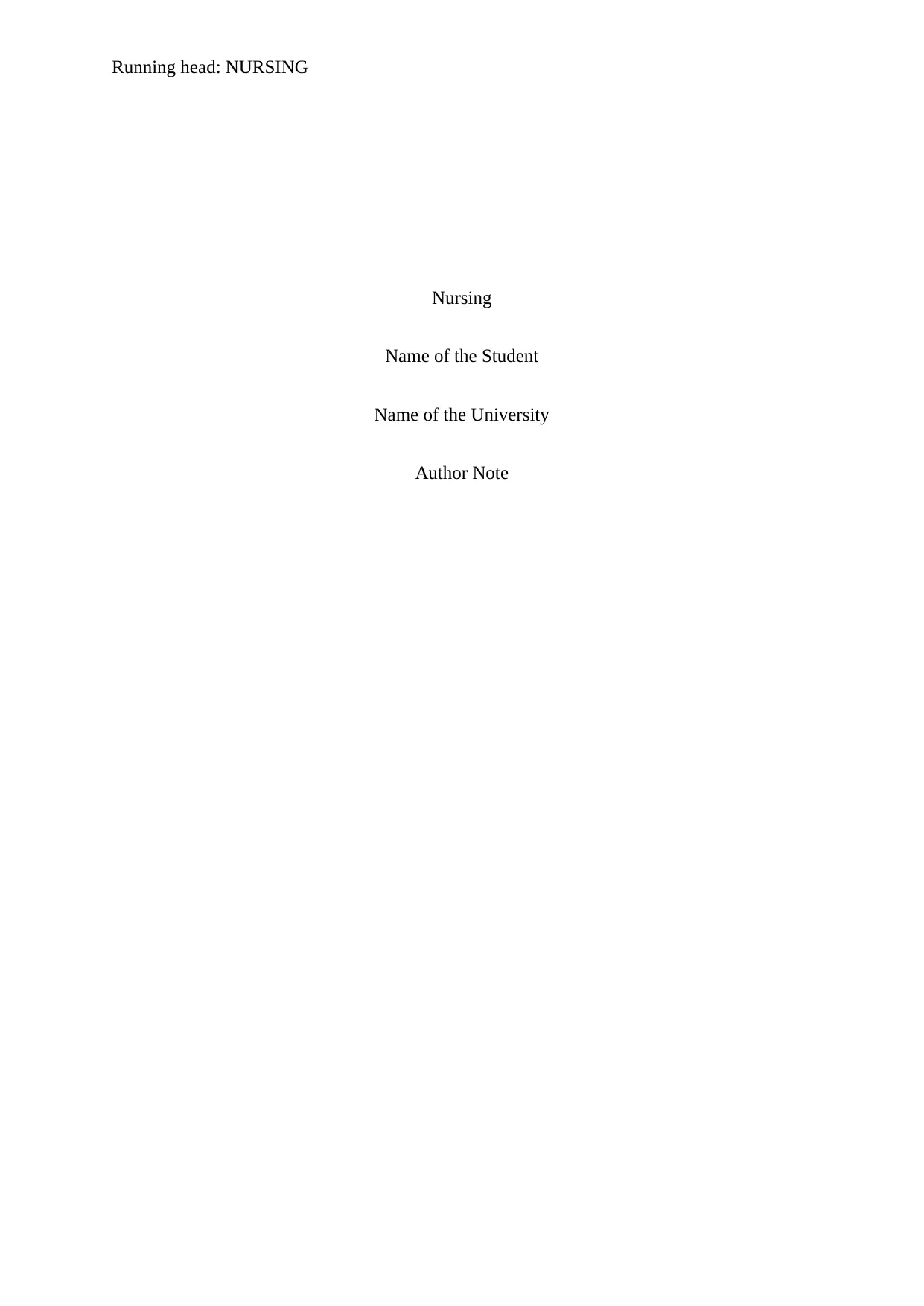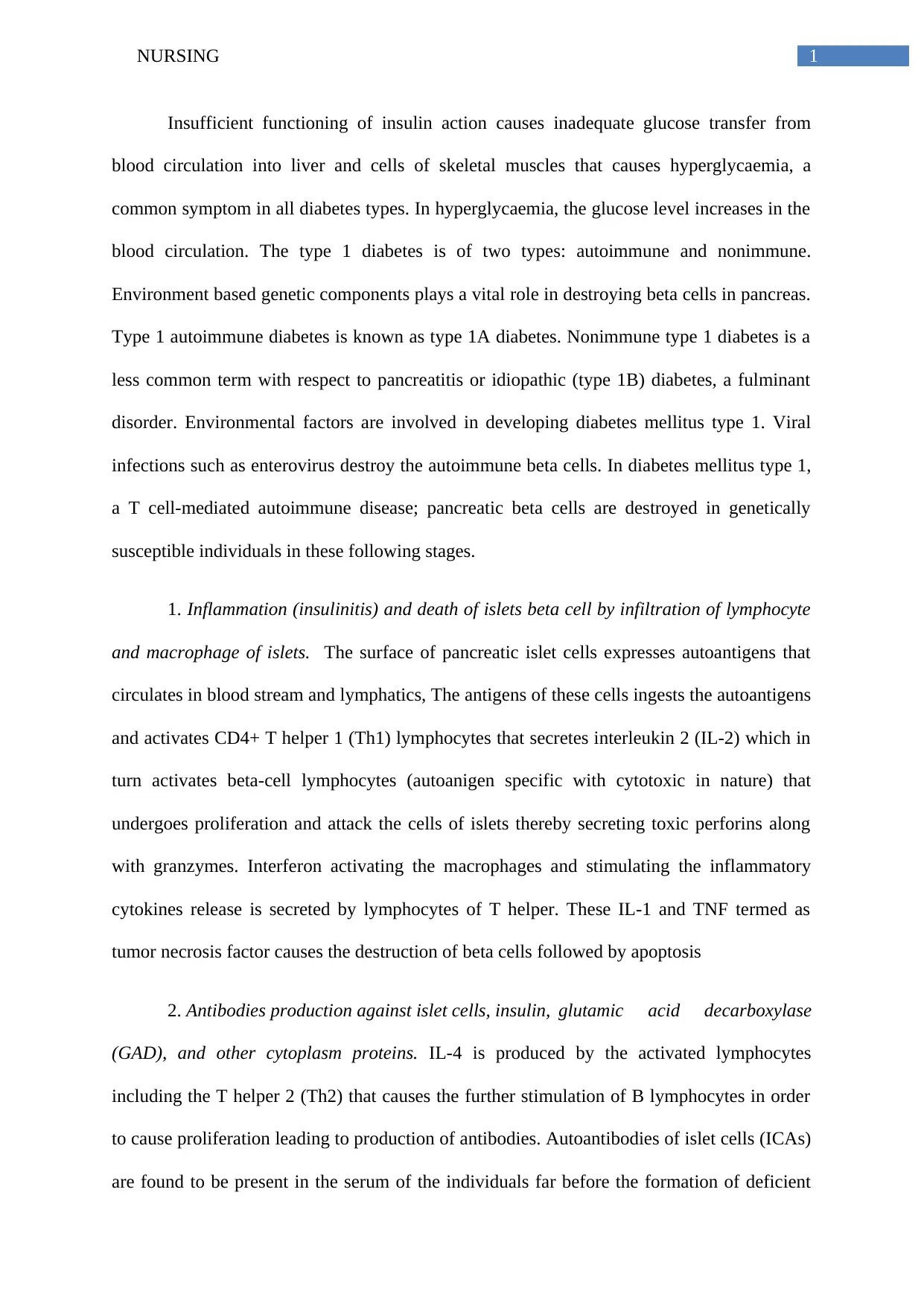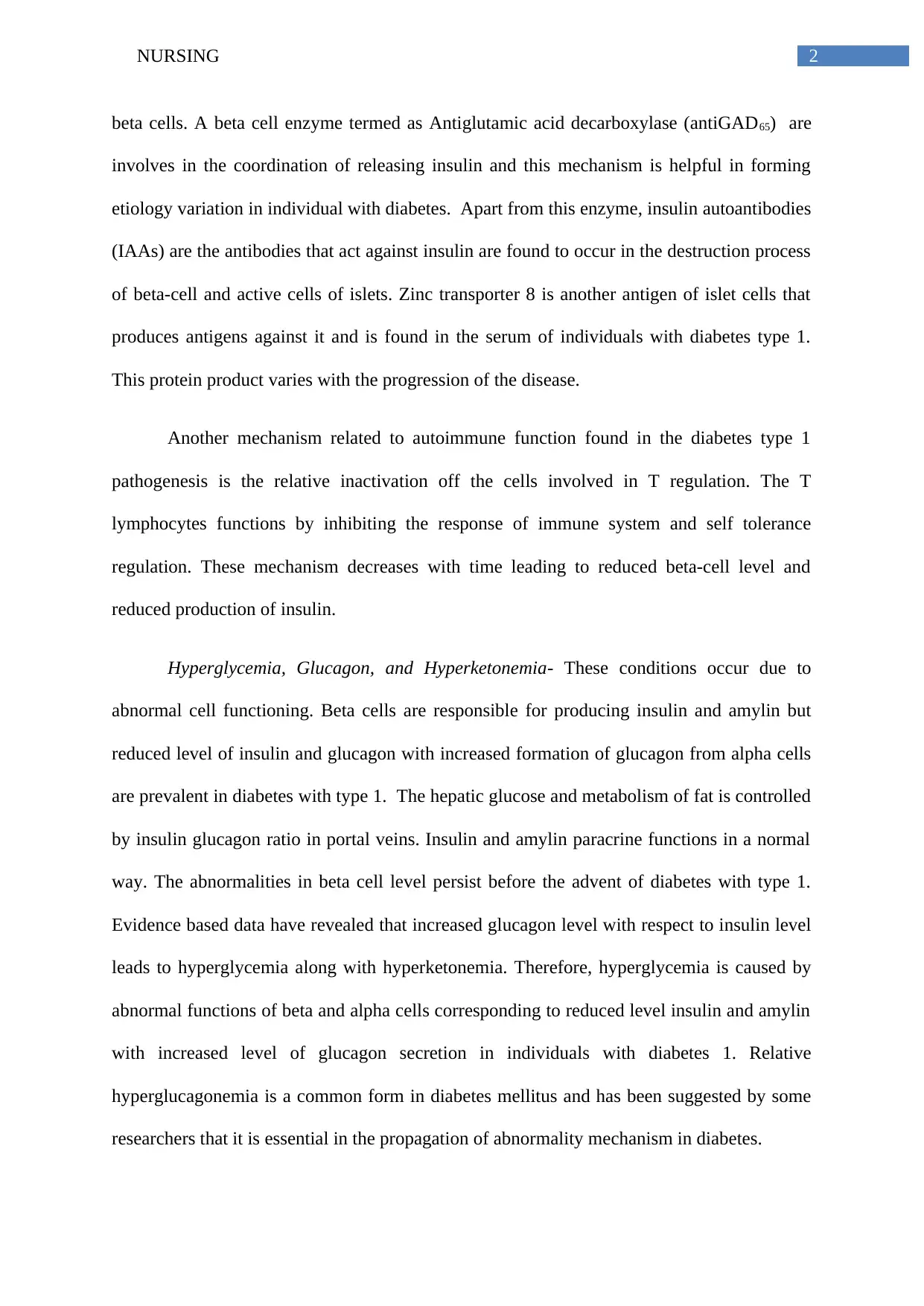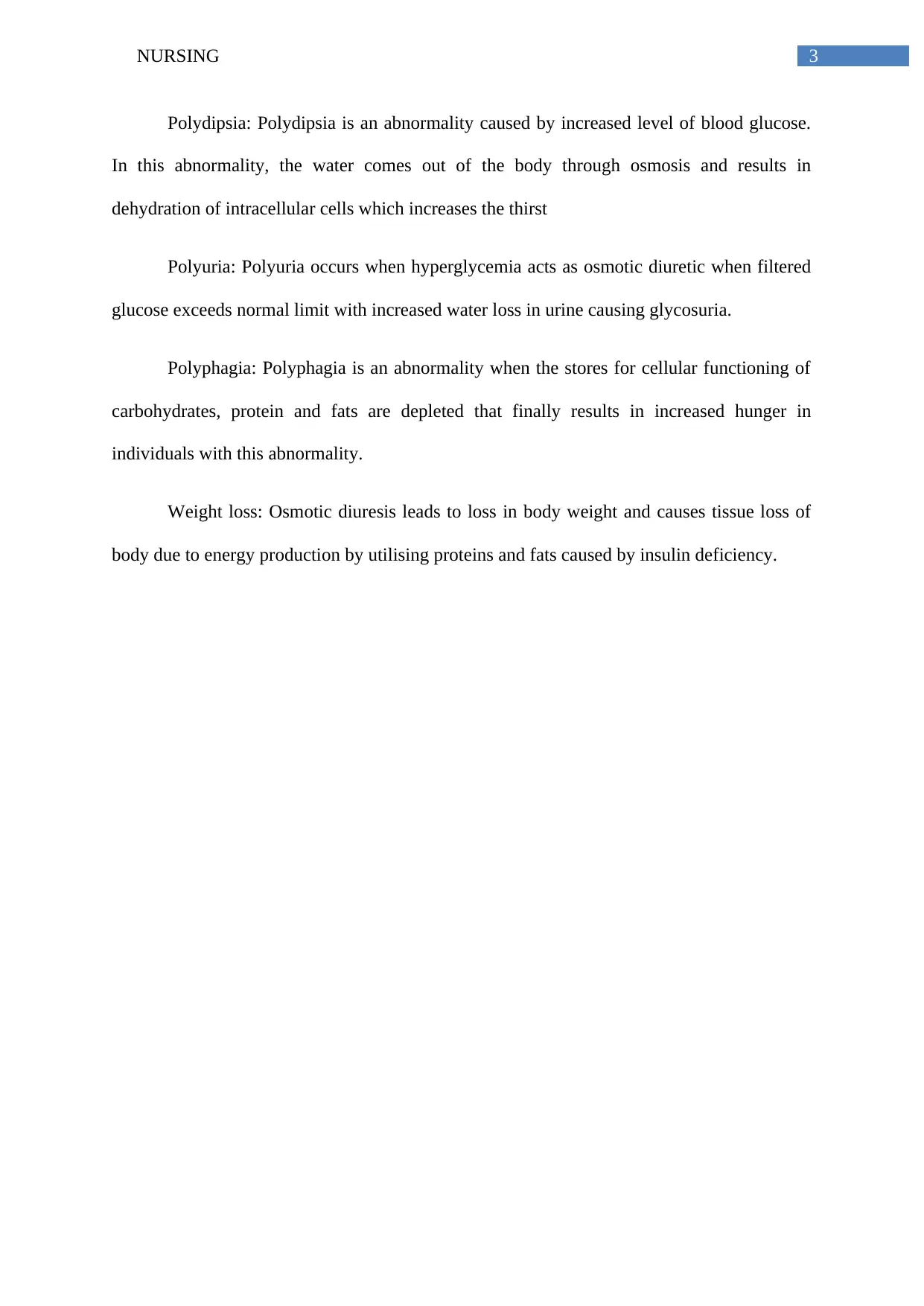Understanding Type 1 Diabetes
VerifiedAdded on 2020/03/02
|4
|844
|38
Essay
AI Summary
This assignment delves into the intricacies of type 1 diabetes, exploring its autoimmune origins, pathological processes, and clinical manifestations. It details the stages of pancreatic beta cell destruction, the role of autoantibodies and immune dysregulation, and the consequences of impaired insulin production. Furthermore, it examines the physiological effects of hyperglycemia, glucagon imbalance, and the development of characteristic symptoms such as polydipsia, polyuria, polyphagia, and weight loss.
Contribute Materials
Your contribution can guide someone’s learning journey. Share your
documents today.
1 out of 4










![[object Object]](/_next/static/media/star-bottom.7253800d.svg)